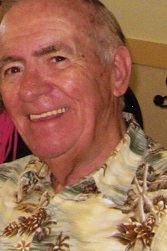 |
 |
 |
 |
 |
 |
#296359 - 10/10/10 01:42 PM
 Digital harmonizers 101
Digital harmonizers 101
|

Senior Member
Registered: 12/01/99
Posts: 12800
Loc: Penn Yan, NY
|
I have been a long time user of harmonizers and I have found a few tips along the way that make for a more realistic performance.
*
First, and MOST important - there is no ONE mix that is correct all night long. I adjust the level between lead and harmony constantly ... sometime even within a song. Using mic technique and dynamic expression is not enough ... sometimes the backups are different - sometimes they are equal.
*
Second - identify YOUR sound. Are you trying to do the Beach Boys, CSNY, Boys2Men? Each approach requires a style recognition. Most successful harmony groups had similar, non superior solo voices. The Lettermen for example - sounded amazing together, but very average as soloists. Identify your objective, then study their sound - blend like they do, modify your diction to make the sounds more pleasing. Simply adding 2-3 voices to a mix does not make it better, but it DOES make it bigger, so maybe the end result needs to be reduced in volume, lower the bass EQ, whatever the final mix sounds like is determined by the blend. Use your ears.
*
Third - use different patches. Sometimes a simple 2 part harmony is best aka Simon and Garfunkel, Everly Bros and such. I use about 4 basic setups.
1. full 3 parts plus me - fairly equal volume
2. octave lower with NO lead - Barry White
(people actually love this!)
3. one voice 1/3 above the lead - equal balance - works great in lots of cases
4. one above and one below the lead - this is a fuller sound than the Phil&Don patch, but not so bold as the Four Freshman sound.
*
When I accompany a lead singer I use the appropriate patch for the song and I LOWER my lead vocal to blend in slightly less than the harmonies. If your lead is too loud - the notes you sing will be out of balance with the rest of the ensemble. If it's too low, the harmonies will sound more robotic and unnatural. Again - CONSTANTLY monitor the bled and make adjustments on the fly.
*
Last night, singing with Frans group gave me the opportunity to be the backup band with ooohs and ahhs galore. It was like being in the Carpenters band. I loved it and the result was wonderful. I listened to the lead - followed her inflection, and laid down a pad that kept her voice on top of a lush, flowing blanket of sound that complimented the lyrics without making it muddy or overbearing. That's the secret. The WORDS have to be the top priority always.
For those starting out - use the 1/3 above voice first and get comfy with a song like "Bye, Bye Love". Only use it on the chorus first, and learn the triggering. I use a footswitch that lives next to my sustain pedal. Easy to get to. After you get good at that - add the harmonies where the boys did - almost all the way through with certain breaks for effect. You need to be a vocal arranger now - it's another hat to wear, but it's SO much fun to run the choir AND the band! Have fun guys!
*
On a sidenote - the TC harmonizer in the PA800 has been like a dream for me. I use it direct from the keys, or trigger it with my Parker midi-fly guitar and I LOVE the result.
Yamaha has a huge challenge in front of them to compete with how good the TC sounds. I hoe the new million dollar Tyros Platinum has the goods! LOL !
Enjoy singers!
_________________________
No longer monitoring this forum. Please visit www.daveboydmusic.com for contact info
|
|
Top
|
|
|
|
|
 |
 |
 |
 |
 |
 |
 |
 |
 |
 |
 |
 |
#296366 - 10/11/10 08:36 AM
 Re: Digital harmonizers 101
Re: Digital harmonizers 101
|

Senior Member

Registered: 09/21/02
Posts: 5521
Loc: Port Charlotte,FL,USA
|
Thanks Dave
Since I use left hand and midi triggering, what advice changes ?
Bernie
_________________________
pa4X 76 ,SX900, Audya 76,Yamaha S970 , vArranger, Hammond SK1, Ketron SD40, Centerpoint Space Station, Bose compact
|
|
Top
|
|
|
|
|
 |
 |
 |
 |
 |
 |
|
|

